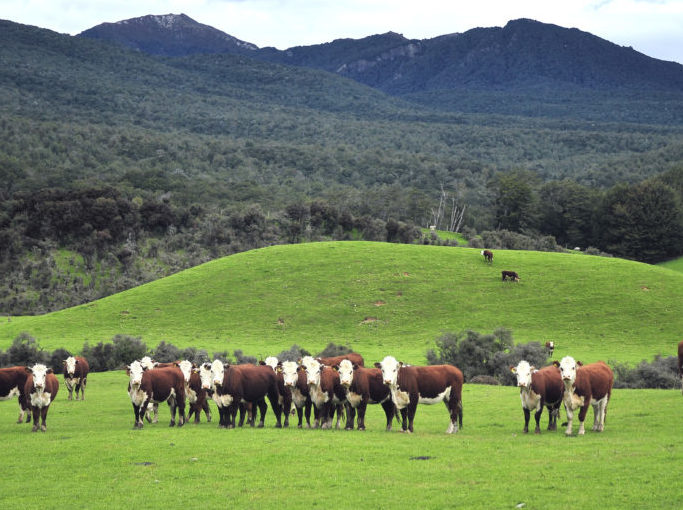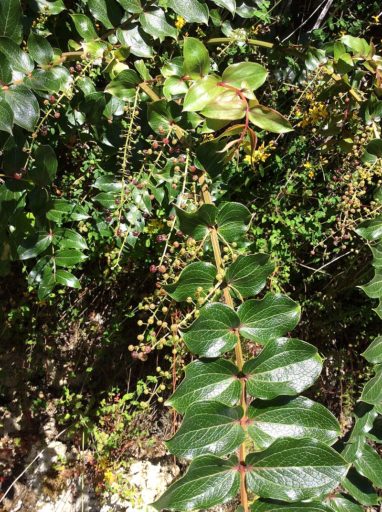Tuhoe researchers recently joined other scientists in evaluating naturally occurring toxins in native plants. Could one of those toxins provide a culturally acceptable alternative to existing rodenticides? The results of their study have just been published in the New Zealand Journal of Ecology.

Anticoagulant poisons have been used to kill rats and mice for decades, however rodents are becoming resistant to the poison and some common toxins can persist in the environment, potentially harming other organisms. The search is on for alternative, better toxins and Aotearoa’s own native plants are showing some interesting potential.
“Vertebrate pesticides are the most important rodent management tool, largely dominated by anticoagulants such as brodifacoum, and by the metabolic disruptor, Compound 1080. There has been considerable opposition to these pesticides, primarily based on concerns about environmental persistence and non-target effects; Maori have been particularly vocal in opposition.”
Maori have place-based knowledge about naturally-occurring plant toxins that could be both effective and culturally acceptable.
“In the context of the research presented here, the term ‘culturally acceptable’ refers to new pest control options that have been co-designed with Matauranga Maori experts that inherently include Maori ways of thinking, being, and acting. Tuhoe researchers in our study wanted to pursue the most promising natural toxic compound found in native plants as a suitable alternative to current vertebrate pesticides. Therefore, we undertook an oral gavage trial to assess the toxicity of tutin, the toxin active in tutu (Coriaria arborea), to the Norway rat, (Rattus norvegicus).”

Tutu occurs naturally in the forests where pests are being controlled and the toxin is therefore already part of that environment.
“Using toxins from native plants could elicit stronger local Māori community support than existing options, because a toxin that the environment is adapted to, rather than a novel toxin, would be more acceptable to a holistic Māori-world view that incorporates kaitiakitanga (environmental guardianship). For Māori, place and whakapapa (genealogy) are important elements of kaitiakitanga. Therefore, where vertebrate pest control is deemed necessary to sustain native biodiversity, then deployment of a locally derived toxin is more likely to be culturally acceptable. Furthermore, increasing the availability of locally-sourced toxins would give new options for control, and so support putting the decision-making power back in the hands of communities, particularly for Māori communities as is the case presented here.”
In a previous research collaboration with representatives from Tūhoe, researchers identified six native plants that are recognised within Mātauranga Māori (Māori knowledge) for their biologically active properties, both as toxins and medicines: ngaio, karaka, tutu, porokaiwhiri (pigeonwood), kōwhai and poroporo (bulli-bull, Solanum aviculare and Solanum lacinatum). A decision matrix using criteria that included the known environmental persistence and humaneness of toxins from all six plants, and key cultural and environmental values identified tutu as having the most potential as a source of toxin for vertebrate pest control.
Tutu can be a very potent toxin.
“Historically, significant numbers of cattle and sheep have died from tutu poisoning. Many mammalian species are affected and there are reports of poisoning of cattle, sheep, pigs, elephants and a dog. Humans have also been poisoned by eating the attractive berries and by eating toxic honey, which can occur when bees collect honeydew from sap-sucking passion-vine hoppers that have fed on tutu.”
The main toxin in tutu is tutin, a crystalline glucoside (C15H18O6, molecular weight 294.3).
“Tutin has an excitatory picrotoxin-like effect that may cause bloat, and seizures. Treatment with barbiturates may be beneficial, but successful treatment is rare. The tutin molecule probably occurs in all parts of the tutu plant except the fleshy petals of the flowers. The objectives of the study were to estimate the lowest dose of tutin that would kill all animals in a sample of laboratory rats and to provide information on the welfare aspects of tutin, associated with its potential use as a rodenticide.”
So what makes a ‘good’ rodenticide?
“There are two key areas that need to be considered to assess the likely technical success of a new rodenticide; efficacy, and safety. For efficacy, the primary test is that the rodenticide is toxic to target rodents. It must also be of a potency that allows sufficient active ingredient to be included within a bait, without making the bait unpalatable. The rodenticide should be equally effective against all individuals, independent of sex, age, and strain.”
A lethal dose must be consumed before the toxin becomes active and the rodent stops eating it.
“Speed of action should be such that the onset of toxicosis does not occur before a lethal dose of poison has been consumed. Related to this, there should be minimal likelihood of a compound eliciting bait shyness.”
A number of safety factors must be evaluated.
“For safety, there should be minimal chance of secondary poisoning. Ideal compounds would be rapidly broken down in the bodies of rodents, so that they are not secondarily toxic, and would have an available antidote. For non-target species, toxicosis would need to act at a speed that would allow time for observation of symptoms, diagnosis of the causative agent, and subsequent antidote administration. Desirable compounds would also have no teratogenic, oncogenic and carcinogenic properties. These compounds would be non-persistent in terrestrial or aquatic systems, have no likelihood of other unacceptable effects on the environment, and would have a humane mode of action in the target species.”

A total of 5.1 kg of tutu berries were collected from plants in the Maitai Valley, Nelson for the study and pure tutin was extracted from these wild-sourced plants.
“The methods for this trial were based on the current guidelines released from the Organization for Economic Cooperation and Development (OECD 2001) which recommends the use of the ‘up-down’ procedure (UDP) as the most appropriate for assessing lethal dose ranges. This test procedure minimises the number of animals required to estimate the acute oral toxicity of a chemical as the stopping rules limit the number of animals in a test and sequential dosing introduces further efficiencies in animal use. Importantly, the guideline contains a requirement to follow the OECD guidance document on humane endpoints that reduces the overall suffering of captive animals used in toxicity tests.”
Tutin was toxic to Norway rats at a dose of 55 mg kg−1, with a quick, humane death compared to other existing rodenticides.
“The onset of toxicosis was not immediate. Rats dosed with lethal amounts of tutin showed no symptoms until at least 5 minutes after dosing. In all cases, seizures were the first visible onset of symptoms. At a dose rate of 55 mg kg, all animals of both sexes died within an hour, and once neurological poisoning symptoms commenced these animals were unconscious within 5–10 minutes.”
The researchers conclude that tutin could be an effective rodenticide for Norway rats, if a consistent dose of 55 mg per kg is achievable. But is this dosage technically feasible in the wild?
“Whole tutu plant material is a good natural source of tutin with a highest measured tutin concentration of 3.7 mg per gram, in new-growth parts of wild plants. Wild Norway rats in New Zealand typically have an average adult bodyweight of 300 g. Therefore, to receive a 55 mg per kg dose, an average-sized individual would need to ingest 16.5 mg of tutin, or 4.45 g of new-growth plant material. For acute-acting toxins, such as tutin, a bait is only likely to be effective if a lethal amount of toxin is ingested during an individual’s first consumption of the bait.”
So how much does the average rat eat? There is a large amount of variation in the amount of bait that a rat will consume in one meal, but one study with 1500 observations of Norway rats, showed that 2.5 g was an average meal size.
“Clearly, it would not be possible to incorporate 4.45 g of tutu plant material into 2.5 g baits. On the assumption that tutin is the only toxic component in the naturally occurring plant material, naturally-sourced tutu plant material is of inadequate potency to be considered the toxic ingredient for a new rat bait. Since the process used to concentrate tutin in this study was extremely expensive, further investigation is needed to develop economically viable means of tutin extraction.”
The study does, however, show that further investigation is warranted.
“We conclude it is warranted to take the next logical research step, which is to prove whether this dose rate would be technically attainable in the field. Although for now New Zealand remains reliant on 1080 and anti-coagulants for mammalian pest control, efforts should continue to develop more targeted toxins and delivery systems. We recommend incorporating Matauranga Maori to identify alternative control tools that could lead to more culturally acceptable pest control.”
Potential secondary poisoning remains a concern.
“There is currently no available information on secondary poisoning. Such poisoning is dependent on the stability of a compound within the digestive system of a target species. While this is unknown for rodents, there is documented evidence that tutin can remain stable having passed through the digestive system of invertebrates. This suggests that tutin ingested by a vertebrate may cause secondary poisoning, but further investigation is needed.”
There is also the question of whether an effective antidote for tutin can be identified.
“Ideal candidate toxicants will have an antidote, and for tutin, there are potential antidotes that come from Mātauranga Māori. Māori hold knowledge that is specific to the tutu plant, including an antidote for tutu poisoning that is sourced from heart rot fungus (Agrocybe parasitica). The availability of an antidote would be a significant advantage in the development of tutin as a bait, although this would require considerable additional research.”
So where to from here?
“The next steps would be to incorporate a lethal quantity of tutin in a bait to (1) determine palatability of the baits to rats, (2) understand whether rats can smell or taste tutin in the bait, and (3) test the stability of tutin in potential bait formulations. Toxic baits could then be trialled in the field. It would also be good to test efficacy against other rat species (particularly ship rats), as well as against brush-tailed possums.”
It’s early days in the research process, however, and tutu is unlikely to replace 1080 or anticoagulants any time soon.
“This research is part of a New Zealand effort to find alternatives to 1080 which is challenging as mammal responses to neurological toxins are complex, and suitable solutions may take considerable time to get right. New Zealand is therefore likely to remain reliant on 1080 as a pest control tool for the foreseeable future. Nevertheless, efforts should continue to develop more targeted toxins and delivery systems, including incorporating Mātauranga Māori, to identify and develop culturally acceptable pest control.”
The full research report is published in the New Zealand Journal of Ecology and is freely available online.

